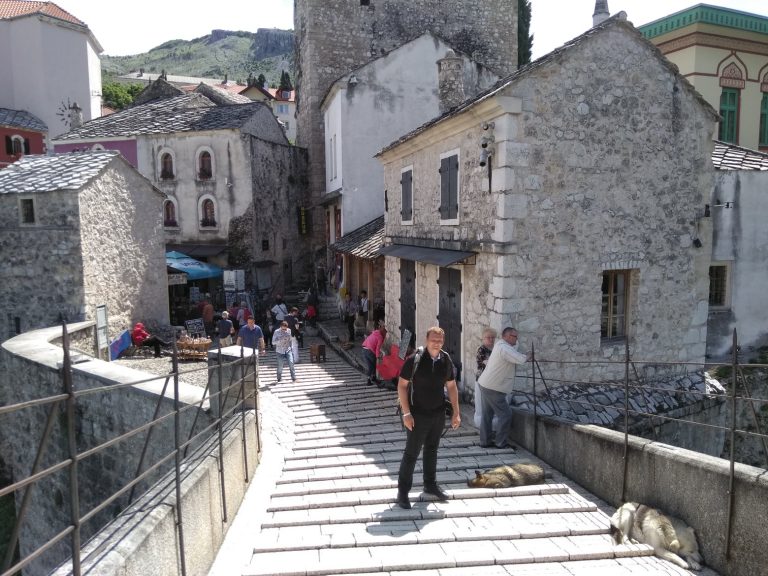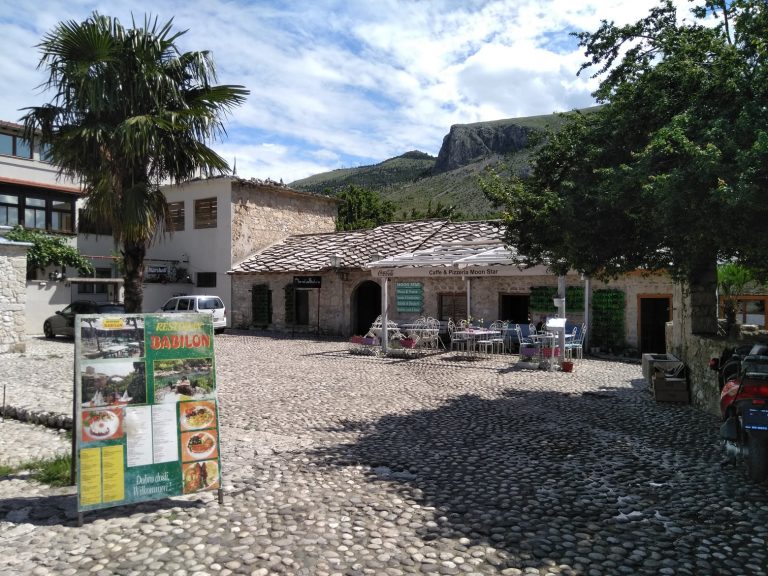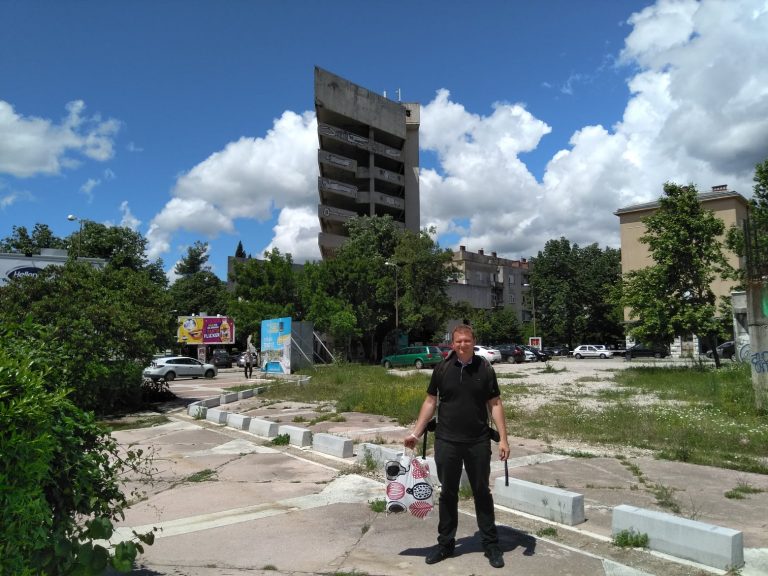Abandoned high-rise building in the city centre in Mostar
Hello. If you have ever been to Mostar, Bosnia and Herzegovina, you have probably noticed an abandoned high-rise building in the city centre. Its story is very interesting. In the 1970s, socialist architecture was supposed to renew the city.
A bank building was built outside the old town of Mostar. It was designed by one of the most famous architects in the country, Dragan Biedich, born in 1949. Between the streets, a building of 10,000 square metres had to be built. It was supposed to be the financial centre of Herzegovina. This would be the main headquarters of the bank’s administration. Dragan’s father Jemal fought against the German occupation together with Tito. After the war, he engaged in politics and became prime minister. Yugoslavia consisted of six republics. Bosnia and Herzegovina was considered a multi-ethnic society. In 1971, the population consisted of 40 percent Bosnian Muslims, 37 percent Orthodox Serbs, and 22 percent Roman Catholic Croats. Therefore, Bosnia was like Yugoslavia in miniature.
The population of Mostar consisted of Bosniaks (50%) and Croats (50%). The city was a model of peaceful coexistence. Yugoslavia faced growing economic problems. This was reflected in the planning of the bank’s high-rise building.
During the first oil crisis, the price of oil rose. Double-glazed windows were used for the building to save energy. In the summer, air conditioning would not be required. The outer cells reflected sunlight and absorbed it in winter. The bank has had to have an impressive ground floor. First floor – technical premises, other six floors – offices.
The building with a rough concrete façade or beton brut in French. Therefore, this style is called brutalism. Brutalism in architecture is a manifestation of modernism. It was typical in Yugoslavia in the 50s and 60s.
In the 1950s, socialist Yugoslavia broke away from the cultural concept of socialism and Stalinism and turned fully to modernism.
The technology in concrete blocks was also state of the art. In 1991, the cables were installed and the building was completed. But then the war started and everything stopped. And that hasn’t changed. Unfortunately.
This is the tallest building in Mostar. It offers a view of the city centre and the surrounding mountains. It was the 360° view that made Dragan’s building a horrible place. During the civil war, Croatian snipers fired on the Bosnian civilians. Since then, Dragan has been trying to finish this building. He no longer designed buildings of this magnitude.



